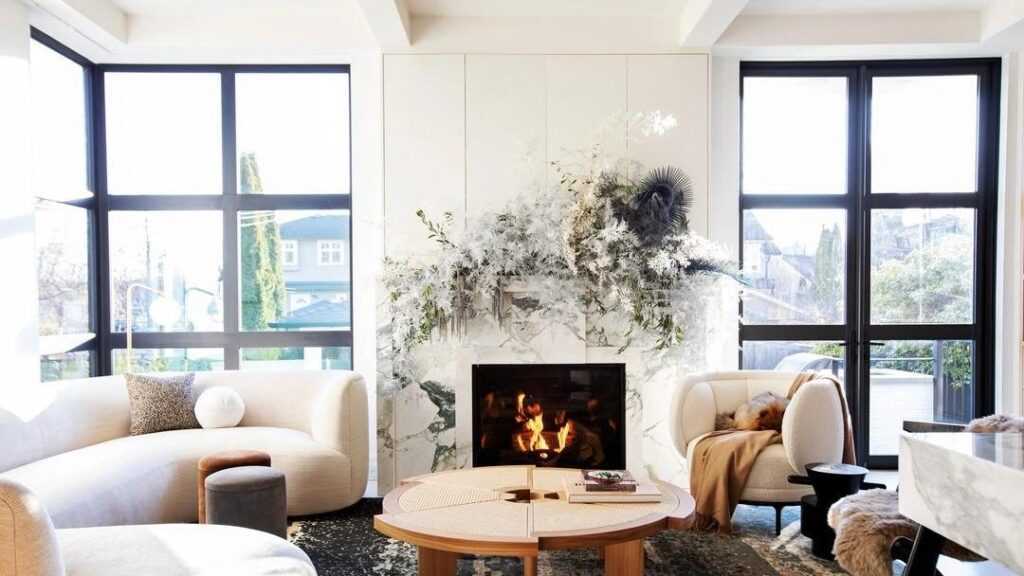Research shows that thoughtful home decor choices can reduce stress levels by as much as 78 percent. The art we bring into our homes plays a significant role in shaping how we feel each day. Studies confirm that meaningful decor can transform both our living spaces and our overall wellbeing. When we encounter art that resonates with us, our brains release dopamine, which produces a genuine sense of pleasure and satisfaction.
Color is another powerful force in shaping our surroundings. Research indicates that ninety percent of homebuyers are influenced by color when making decisions, and these reactions are both psychological and physiological. The pieces we choose to place on our walls do far more than fill empty space.
This article looks at how meaningful art creates a warmer and more inviting atmosphere at home. You will discover why we form emotional connections with visual pieces, what makes artwork truly significant, and how thoughtful selections can transform the character of a room.
The Emotional Connection Between Art and Home

Image Source: Wall Decor Delights
Art does more than decorate walls—it creates a profound emotional experience that shapes our feelings in our spaces. Studies show that looking at art can reduce stress hormone levels by up to 60%. Our homes become more than shelters; they transform into sanctuaries that support our wellbeing.
Why we respond emotionally to visual art
Our brains process visual information much faster than other forms of communication. This creates immediate emotional responses to art. Science backs this up. Art that strikes a chord with us activates complex neural mechanisms right away.
The emotional connection happens in several brain regions at once. The ventral visual stream processes colors and forms while our limbic system creates emotional responses. This complex neurological interaction explains why certain pieces can change our mood from stressed to relaxed instantly.
Scientists have measured real physical changes that occur when people look at art. Research in Behavioral Sciences shows that viewing beautiful artwork reduces cortisol—our main stress hormone. It also boosts production of dopamine and serotonin.
How art creates a sense of belonging
Home decor has become one of our most powerful tools to create belonging in today’s disconnected world. People often see it through trends or esthetics, but meaningful art works as what designers call “emotional architecture”. It shapes our feelings in spaces without saying a word.
The art we choose tells our story and shows what matters to us. Each piece becomes part of our visual autobiography that reflects our experiences and creates flow throughout our living space. Different artwork can completely change how a space feels—each choice reveals whether we feel welcome, seen, and free to be ourselves.
Thoughtful home decor ideas do more than arrange furniture and pick colors—they address unspoken emotional needs. Art that holds personal meaning reminds us of cherished experiences and fills our spaces with warmth.
What Makes Art ‘Meaningful’ in Home Decor

Image Source: Pembrook Interiors
Your home’s decor tells a story through art pieces you choose with care. Generic mass-produced prints can’t match the authentic feel of art that holds personal meaning. Visitors notice this difference right away.
Art that reflects your values or memories
The best art shows who you truly are. Pieces that highlight what matters to you such as travel moments, cherished family traditions, or lyrics that shaped you help your home feel personal and grounded. Designers often refer to this as emotional architecture because these visual choices shape the atmosphere of a room through meaning rather than decoration.
You can move beyond standard store prints and create something that feels uniquely yours. Framing old family recipes, displaying music sheets from songs you love, or showcasing photos from meaningful places gives your walls a story to tell. You can also paint your favorite memories through custom kits created by Number Artist, which allow you to turn personal moments into artwork that holds emotional weight.
The difference between decorative and meaningful art
Decorative art just matches your room’s colors or style. It fits in among other elements to set a mood. Since it follows design trends, this type of art often looks dated after a while.
Meaningful art works differently. It becomes the star of the room that other elements complement. Instead of blending in, it draws attention as an emotional centerpiece. Art collectors stay loyal to artists they connect with, not just pretty pictures.
Creating art that preserves your personal moments
One homeowner said it best: “We put heart in our art.” You can turn special memories into visible art by displaying childhood keepsakes, honeymoon spots, old homes, or favorite vacation photos. Each piece becomes a legacy of love for future generations.
Kids especially benefit when they see family art on display. These visual anchors help them understand their place in the family’s story and build their identity. In our digital age, printed photos and custom art pieces bring feelings out of phones and computers into real life.
How Art Transforms the Feel of a Room

Image Source: Planner 5D
Art has a remarkable ability to shape the atmosphere of a room and influence how you experience your home. The right piece can elevate an ordinary space and support both emotional comfort and visual harmony. Its impact extends far beyond appearance and touches nearly every part of daily living.
Here are the ways art transforms the feel of a room:
- It sets the mood.
Colors, subjects, and styles influence how the room feels the moment you step inside. Soft blues and muted greens create calm in restful spaces, while brighter tones add energy to living and gathering areas. - It creates a natural focal point.
Art draws the eye and gives the room a sense of structure. Hanging larger pieces at eye level or positioning them above key furniture helps anchor the layout and guide visual flow. - It brings a cohesive color palette.
A single artwork can inspire the colors used throughout your home. When shades repeat across walls, textiles, and accessories, the rooms feel connected without appearing overly coordinated. - It encourages conversation and connection.
Striking or meaningful pieces often spark curiosity. Guests naturally ask about their stories, which leads to more personal and memorable interactions.
It gives the room a completed look.
Empty walls can make even a furnished space feel unfinished. The right artwork fills that visual gap and adds the sense of intention that makes a room look polished. - It adds joy through the process of collecting.
Choosing art becomes a personal journey. Each piece reflects a moment, memory, or feeling, creating a collection that grows into a meaningful expression of your life.
Beyond Esthetics: The Deeper Impact of Art in Daily Life
Research shows that art’s effect goes way beyond decoration—it changes our biology and psychology at a fundamental level. The pieces on your walls do more than look pretty. They actively shape your daily experience.
How art influences your mood and mindset
The right home decor creates measurable changes in your body. Studies show that looking at visual art reduces cortisol (the stress hormone) while boosting serotonin and dopamine levels. The art you choose programs your emotional state and can guide you toward peace or energize your mind.
Color plays a vital role. Warm tones like red and orange create energy and vibrancy that work well in social spaces. Cool blues and greens promote calmness and are ideal for bedrooms.
The ripple effect on relationships and productivity
Well-chosen art improves both individual wellness and shared experiences. Offices with appropriate artwork report much higher employee satisfaction and participation. Art also works as a conversation starter that helps build deeper connections among family and guests. This creates natural opportunities for meaningful interaction.
Using art to create a sanctuary at home
Your home works as “emotional architecture”—a physical space that shapes your inner world. Each room meets different emotional needs. Entrance areas need welcoming pieces to set your home’s tone. Bedrooms need calming works that promote rest. Nature-inspired pieces can provide mental health benefits similar to outdoor time.
A Moment to Reflect
Meaningful art has a quiet strength that shapes the way you experience your home each day. It supports your wellbeing, creates harmony in your spaces, and brings depth to the moments you spend with the people you care about. Thoughtfully chosen pieces help your rooms feel warmer and more human because they hold stories that speak to your values and memories. Over time, these choices form a visual language that welcomes you each time you step through the door.
As you continue building your space, consider how each artwork contributes to the atmosphere you want to create. Pieces that resonate with you have the power to guide your mood, spark connection, and bring a sense of peace that stays with you long after the day ends. A home filled with intention becomes more than a place to live. It becomes a place that supports who you are and who you wish to become.

 Leonerico Vaughan, as both an author and collaborator in the development of Avant Garde Artistry Hub, brings a unique perspective to the platform. His contributions center around the intersection of art and technology, offering artists valuable insights into the latest creative tools and techniques. Leonerico’s passion for innovation shines through in his work, helping to keep the artistic community informed and empowered.
In addition to his writing, Leonerico has played a key role in shaping the platform’s resources, particularly those focused on helping artists build sustainable careers. His dedication to the success of Avant Garde Artistry Hub makes him a vital part of its mission to support and inspire modern artists.
Leonerico Vaughan, as both an author and collaborator in the development of Avant Garde Artistry Hub, brings a unique perspective to the platform. His contributions center around the intersection of art and technology, offering artists valuable insights into the latest creative tools and techniques. Leonerico’s passion for innovation shines through in his work, helping to keep the artistic community informed and empowered.
In addition to his writing, Leonerico has played a key role in shaping the platform’s resources, particularly those focused on helping artists build sustainable careers. His dedication to the success of Avant Garde Artistry Hub makes him a vital part of its mission to support and inspire modern artists.